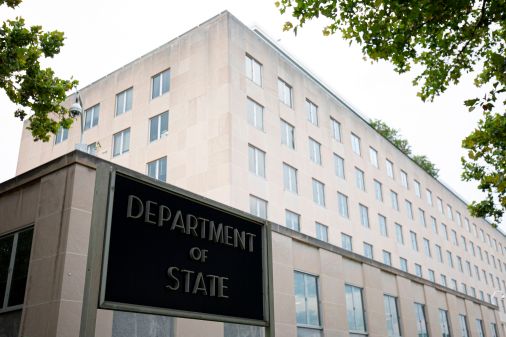The Postal Service is leaning into AI for better shipping experiences

It’s a safe bet that few federal agencies hear more about their customer service issues than the United States Postal Service — especially during the holiday season.
But Pritha Mehra, chief information officer for the USPS, is bullish about her agency’s ability to provide unparalleled customer experiences: “We are the best deliverers in the world,” she winkingly asserted to a giggling crowd of government and industry tech professionals at Wednesday’s “Federal Innovation Series: Leading in the Era of AI” event, presented by Microsoft and FedScoop.
Mehra’s knowing confidence just weeks ahead of the holiday shipping season is seemingly buoyed by two factors: the agency’s apparent progress in Postmaster General Louis DeJoy’s 10-year strategic plan, and more pointedly, its embrace of artificial intelligence.
“We’ve been using and are continuing to train and refine our models,” Mehra said, “to give you accurate predictions of where your package is, when it’s going to be delivered and then, with it, the exact time. We’re also looking at it from a more predictive sense to … foresee a failure before the purchase.”
In addition to USPS’s use of AI to improve customer experiences around package delivery, Mehra said the agency is looking at how the technology can “improve our entire development infrastructure.” Fraud detection is a major component of that process improvement, she said, noting that AI can be used to determine “whether a package has been paid for, where it’s coming from [and] what the patterns are.”
Other AI use cases with the USPS involve documenting legacy code and writing new code, strengthening logistics and transportation networks and using a natural language processing agent to handle customer calls regarding passports.
From a security standpoint, Mehra said USPS has adopted zero trust and really “taken it to heart.” The Postal Service’s architecture team, meanwhile, has grown from eight members to 50, and they’re charged with handling assessment processes for any modernization efforts.
“It goes through this process, which really understands journey mapping and flows and data and models, so that you have a current state and you have a future state,” Mehra said. “And it’s easier to modernize something you already know than something that’s new. So that has worked very effectively. And there’s a very strong marriage between our architecture team and our data team.”
For an organization that moves roughly 129 billion mail pieces and packages annually and handles about 110 petabytes of data, according to Mehra, the USPS does everything at a “massive scale.” Using AI to make that work more manageable and efficient is undeniably a top priority for the agency.
“We want to do this extremely ethically,” Mehra said, “and with security in mind, foremost.”






